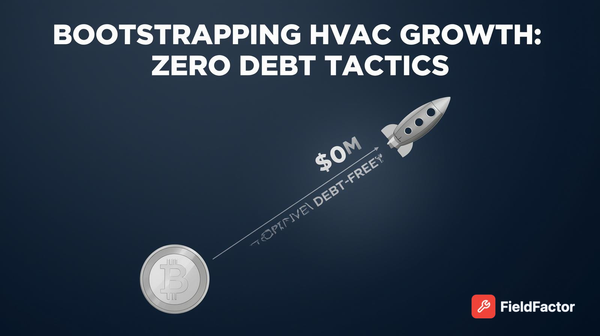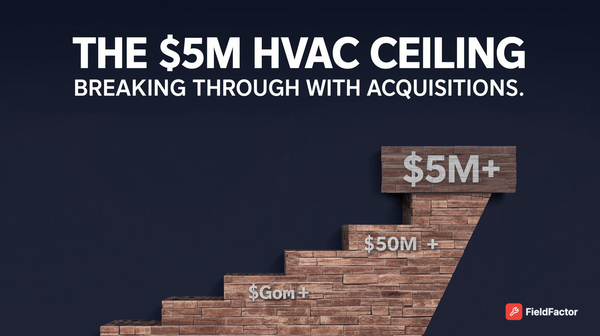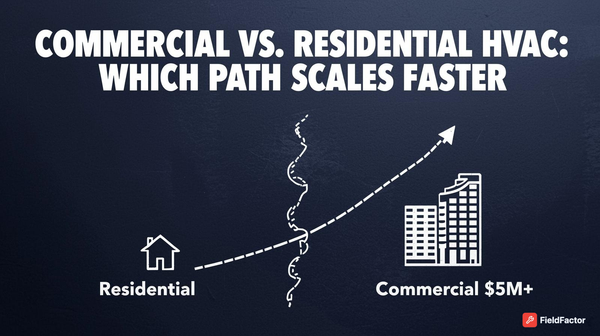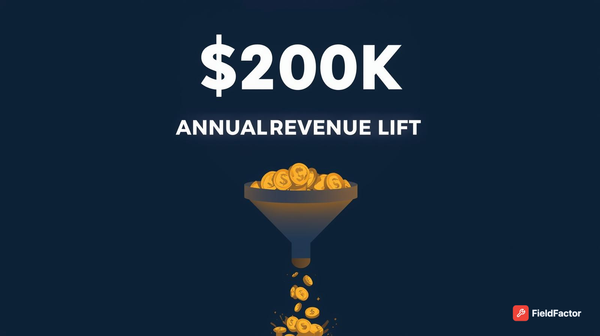Unlocking the Vault: What HVAC Business Owners Really Earn in 2025 – A State-by-State Breakdown and Income Insights
What do HVAC owners really earn? Get the 2025 state-by-state income breakdown & unlock profit insights. Ditch the guessing, find your payday. See the numbers now!

Hey there, fellow HVAC hustlers and aspiring entrepreneurs! If you're grinding through service calls, sweating over bids, or dreaming of ditching the wrench for the corner office (or at least a bigger truck), you've probably wondered: What's the real payday for running an HVAC show? Spoiler alert: It's not all champagne and caviar, but it's far from pocket change either. In this no-BS deep dive, we'll crack open the numbers on average earnings for HVAC business owners, slice 'em up by state, and spill the tea on those elusive income bands and percentiles. Because knowledge is power – and in this game, power means profit.
Whether you're a solo operator slinging ductwork or scaling a fleet, the HVAC industry is booming. With the U.S. market projected to hit $32 billion in 2024 and grow at 7.4% annually through 2030, thanks to energy-efficient upgrades and smart home tech, there's never been a better time to own a piece of the pie. But let's get to the money talk – because that's why you're here.
The National Picture: Averages, Medians, and the Skewed Reality
First off, a quick reality check: "Average" income in HVAC ownership is like the wild west – full of outliers. The national average annual income for HVAC business owners hovers around $598,000, but that's heavily skewed by a handful of mega-operators raking in millions from multi-state empires. The median – a truer measure of what most owners pocket – sits at about $75,000 to $76,000 per year. Why the gap? Picture this: 90% of HVAC firms are small outfits (under 5 employees, revenue below $1M), scraping by on 3-5% net margins, while the top 10% crush it with 10-15%+ through smart scaling and service contracts.
Other sources paint a similar spread for "owner-operators" (think you + a van):
- Glassdoor: $106,352 average, with 75th percentile at $138,090 and 90th at $173,042.
- ZipRecruiter: $86,195 annually ($41.44/hour), ranging from $26,500 (25th percentile) to $125,000 (75th).
- Industry Consultants (e.g., Success Group International): $35,000–$75,000 for typical owners, often 6% of revenue on $758K average company sales.
Bottom line? If you're starting small, aim for $50K–$90K after expenses. Scale to 5+ techs, and you're eyeing six figures. But remember: Owners often "pay" themselves last, reinvesting in growth. Pro tip: Target 12% operating margins to hit that sweet spot.
Income Bands and Percentiles: Who's Crushing It and Who's Just Getting By?
HVAC ownership is a feast-or-famine feast. Data on exact percentiles is patchy (blame the fragmented industry), but here's a synthesized breakdown based on surveys, BLS proxies for contractors, and consultant reports. These are personal take-home estimates after business expenses, taxes, and reinvestments – not gross revenue.
| Percentile/Band | Annual Income Range | Who Fits Here? | Key Drivers |
|---|---|---|---|
| Bottom 25% (Strugglers) | <$35,000 | Solo ops in low-demand areas; high overhead, inconsistent leads. | Poor pricing, no marketing; often side-hustles. |
| 25th–50th (Solid Middle) | $35,000–$75,000 | Small teams (1–3 techs); $500K–$1M revenue at 5–7% margins. | Steady residential service; basic digital presence. |
| Median (50th) | ~$75,000 | Average owner: Family-run shop, $750K revenue. | Balanced mix of installs/repairs; some maintenance contracts. |
| 75th (Thrivers) | $75,000–$150,000 | 5–10 employees; $1M–$3M revenue at 10%+ margins. | Commercial gigs, upselling efficiencies; strong local SEO. |
| Top 10–25% (High Rollers) | $150,000–$500,000+ | Multi-location firms; $5M+ revenue. | Recurring revenue (e.g., smart HVAC subscriptions); acquisitions. |
| Top 1–5% (Elites) | $1M+ (up to $20M) | National players or scaled locals. | Diversified (e.g., geothermal, IAQ); 15–20% margins on $10M+ sales. |
Roughly 10% of owners clear $1M+ annually, fueled by post-pandemic booms in energy retrofits and a 15% job growth outlook through 2032. The bottom 25%? Often under $35K, hit by seasonal slumps or competition from big-box installs. To climb bands: Lock in maintenance agreements (recurring gold) and use software for 20%+ revenue bumps.
State-by-State Breakdown: Where the Money Flows Hot (and Cold)
Location is king – think climate extremes driving demand, cost-of-living cranking wages, and union strength padding pockets. We pulled from BLS, ZipRecruiter, and industry reports for owner-operator proxies (adjusted up 20–50% from tech salaries for ownership premium). High-revenue states like CA ($12K+ firms, $XXB total) and TX amplify top-end earnings.
Here's the scoop for all 50 states (averages for established owners; add 20–30% for top performers):
| State | Avg. Annual Owner Income | Median Tech Wage (Proxy) | Notes |
|---|---|---|---|
| Alabama | $55,000–$70,000 | $53,700 | Low COL boosts take-home; steady residential. |
| Alaska | $100,000–$150,000 | $83,660 ($40/hr) | Extreme cold = heating boom; highest tech pay. |
| Arizona | $60,000–$85,000 | $49,817 | AC heaven; Phoenix/Tucson hot spots. |
| Arkansas | $50,000–$65,000 | $47,329 | Low end; urban Little Rock edges higher. |
| California | $80,000–$120,000+ | $60,000+ | Massive market (12K+ firms); Bay Area premiums. |
| Colorado | $70,000–$95,000 | $58,000 | Denver growth; efficiency upgrades big. |
| Connecticut | $85,000–$110,000 | $55,310 ($26.59/hr) | Union strong; top East Coast earner. |
| Delaware | $65,000–$85,000 | $52,000 | Steady; Wilmington commercial. |
| Florida | $55,000–$75,000 | $48,000 ($21/hr low) | AC overload (9K+ firms); hurricane repairs spike. |
| Georgia | $60,000–$80,000 | $50,000 | Atlanta boom; humid summers. |
| Hawaii | $90,000–$130,000 | $74,200 | Island premiums; tourism AC. |
| Idaho | $50,000–$70,000 | $45,000 | Low avg; Boise growth potential. |
| Illinois | $65,000–$90,000 | $55,000 | Chicago winters; industrial. |
| Indiana | $55,000–$75,000 | $48,000 | Midwest steady; manufacturing. |
| Iowa | $55,000–$75,000 | $60,000 ($28.85/hr mid) | Ag-driven; balanced seasons. |
| Kansas | $55,000–$75,000 | $48,000 | Tornado repairs; rural challenges. |
| Kentucky | $50,000–$70,000 | $47,000 | Low end; Louisville uptick. |
| Louisiana | $60,000–$85,000 | $52,000 | Humidity + hurricanes; $111/hr outliers. |
| Maine | $60,000–$80,000 | $50,000 | Cold snaps; high per capita firms. |
| Maryland | $70,000–$95,000 | $58,000 | DC spillover; low outliers rare. |
| Massachusetts | $85,000–$115,000 | $75,190 ($26.62/hr) | Boston tech; union power. |
| Michigan | $60,000–$85,000 | $52,000 | Harsh winters; auto plants. |
| Minnesota | $75,000–$100,000 | $62,000 | Deep freeze demand. |
| Mississippi | $45,000–$65,000 | $45,000 | Lowest tech pay; humid but low COL. |
| Missouri | $50,000–$70,000 | $37,300 low | St. Louis steady; variable. |
| Montana | $60,000–$80,000 | $50,000 | Harsh winters; high per capita. |
| Nebraska | $55,000–$75,000 | $50,000 | Ag/rural; Omaha boost. |
| Nevada | $65,000–$90,000 | $55,000 | Vegas AC overload. |
| New Hampshire | $70,000–$95,000 | $58,000 | Seasonal swings. |
| New Jersey | $80,000–$110,000 | $60,000+ | Dense market; rebates fuel growth. |
| New Mexico | $55,000–$75,000 | $48,000 | Desert heat; sparse. |
| New York | $75,000–$105,000 | $62,000 | NYC premiums; 7K+ firms. |
| North Carolina | $60,000–$85,000 | $52,000 | Growth state; humid. |
| North Dakota | $65,000–$90,000 | $55,000 | Oil boom winters. |
| Ohio | $60,000–$85,000 | $52,000 | Industrial; Cleveland/Columbus. |
| Oklahoma | $55,000–$75,000 | $48,000 | Tornadoes/temps. |
| Oregon | $70,000–$95,000 | $62,000 ($29.88/hr high) | Mild but efficient focus. |
| Pennsylvania | $65,000–$90,000 | $54,000 | Philly/Pitts; winters. |
| Rhode Island | $75,000–$100,000 | $58,000 | High baseline ($17+/hr start). |
| South Carolina | $55,000–$75,000 | $48,000 | Coastal humidity. |
| South Dakota | $55,000–$75,000 | $50,000 | Extremes; rural. |
| Tennessee | $50,000–$70,000 | $47,000 | Low; Nashville growth. |
| Texas | $65,000–$90,000 | $59,634 ($28.67/hr) | Massive (9K+ firms); AC king. |
| Utah | $60,000–$85,000 | $52,000 | Dry heat; SLC boom. |
| Vermont | $60,000–$80,000 | $50,000 | Cold; green incentives. |
| Virginia | $70,000–$95,000 | $55,000 | DC/NoVA premium. |
| Washington | $80,000–$110,000 | $72,340 | Seattle tech; high pay. |
| West Virginia | $45,000–$65,000 | $45,000 | Lowest; rural challenges. |
| Wisconsin | $65,000–$90,000 | $55,000 | Brutal winters. |
| Wyoming | $60,000–$80,000 | $50,000 | Energy sector; high per capita. |
| D.C. | $90,000–$130,000 | $77,970 | Federal contracts; top spot. |
Hot Takes by Region:
- Northeast/West Coast: Union muscle and high COL = $80K+ medians (e.g., MA, WA).
- South: Volume from heat/hurricanes, but competition caps at $60K (FL, TX exceptions).
- Midwest/Mountain: Seasonal reliability; $55K–$75K sweet spot.
- Alaska/Hawaii: Isolation premiums push $100K+.
The Big Players: Lessons from Top-Earning HVAC Giants
Want to emulate the elites? Look to revenue behemoths like Carrier ($17.8B HVAC arm), Trane Technologies, and Rheem – they dominate 90% of shipments via scale and innovation. State-wise, CA/TX/FL host the most high-rev firms ($10B+ combined), with owners netting 10–20% margins on smart tech and commercial installs. Key? Diversify beyond repairs – think geothermal (1% of homes now, exploding) and IAQ.
Level Up Your Earnings: Actionable Wins for Owners
To hit those top bands:
- Nail Margins: Aim 10–15% net; cut waste with software (boosts revenue 21%).
- Recurring Revenue: Maintenance plans = steady cash; upsell efficiencies for 30% bumps.
- Scale Smart: Hire at 20% of their revenue gen (e.g., $90K tech on $450K output).
- Market Like a Boss: SEO + referrals; avoid the 70% of owners dissatisfied with agencies.
- Cert Up: NATE/EPA boosts bids 10–20%.
The HVAC game rewards the bold – climate change and green mandates are your tailwinds. What's your take-home target? Drop a comment, and let's swap war stories. Until next time, keep the freon flowing and the profits rising. You've got this!
Sources: Aggregated from BLS, ZipRecruiter, Glassdoor, ServiceTitan, and industry reports (2024–2025 data).





